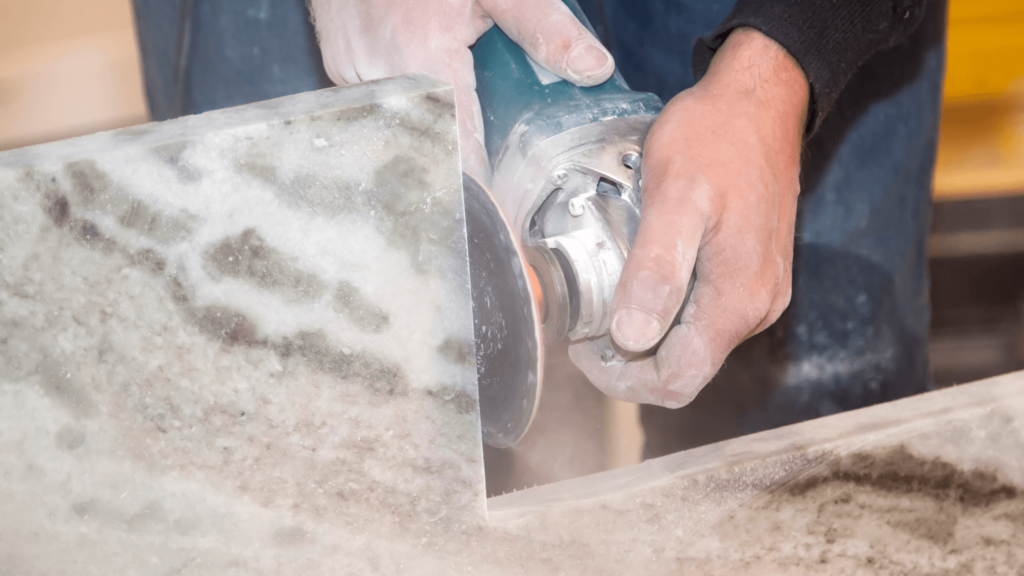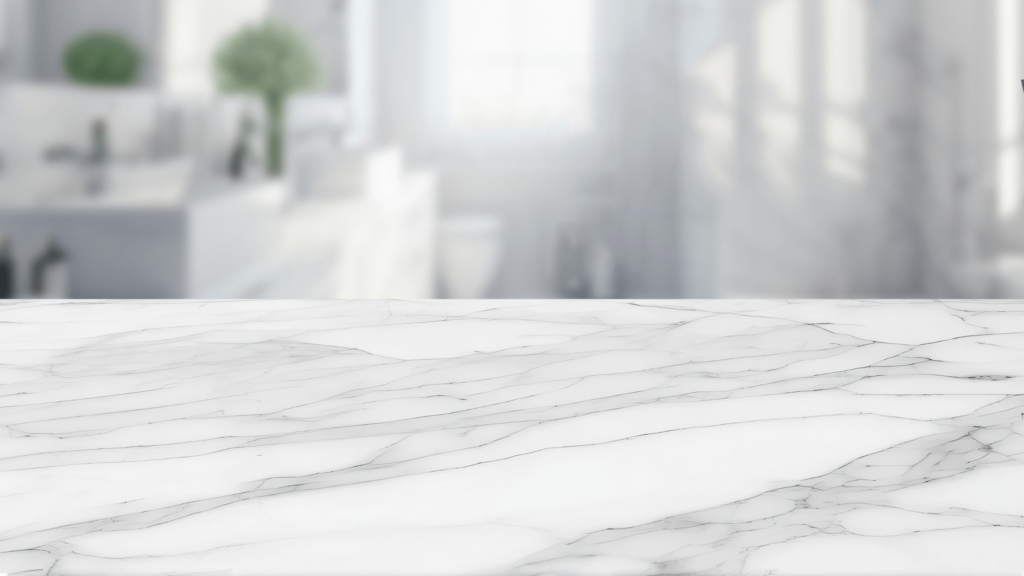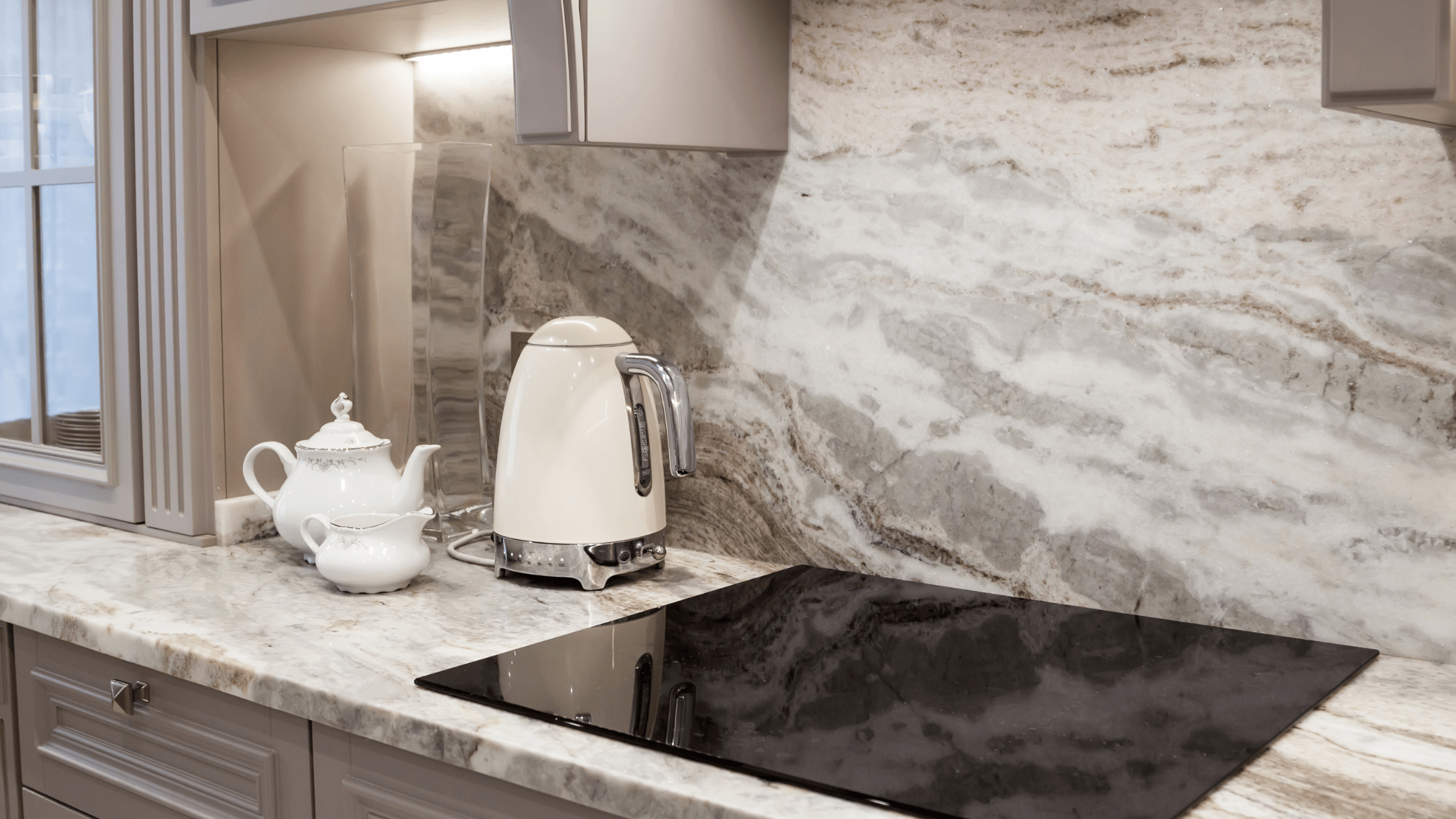Quartz countertops are popular among design professionals and homeowners but aren’t entirely void of risks, especially for those working with them. Silica exposure happens during the cutting process of quartz and other natural stones, which increases the risk of silicosis when silica particles are inhaled. Safer, alternative countertops like granite, marble, and porcelain, which are comparable in looks and durability but contain lower levels of silica, are recommended.
The problem with quartz

The popularity of quartz countertops has dramatically increased over the last ten years, creating a high demand. Concerns around the manufacturing and installation of quartz countertops have risen as cases of deaths and severe illness among workers have been reported.
Quartz is made from crushed quartz stone, dyes, glass, and resin and contains a high percentage of silica—a natural mineral found in sand, stone, mortar, glass, and other common construction and household materials.
During the fabrication of quartz countertops, dust from cutting, grinding, and polishing releases silica dust into the air. Respirable crystalline silica is small airborne particles, 100 times smaller than sand granules, that can be inhaled and settle in the lungs—once in there, they cannot be removed.
A higher demand for quartz countertops has increased manufacturing, putting more workers at risk of silicosis.
As of July 1, 2024, Australia became the first country to ban engineered stone benchtops, slabs, and panels. The ban does not apply to porcelain and sintered stone products. California enforced emergency measures to improve working conditions for the production of quartz, focusing on ventilation, respirators, and wet cutting to reduce dust levels.
It’s important to note that only those involved in manufacturing and installing quartz countertops are at risk of exposure—once installed, they do not pose a threat to homeowners.
Synthetic stone has a higher silica content than natural stone, making workers more susceptible to silica dust inhalation. The following materials have some of the highest levels of silica:
- Bitumen
- Mortar
- Grout
- Sand
- Cement
- Granite
- Brick
People who work in industries such as cement manufacturing, demolition, sandblasting, mining, and construction are also at a higher risk of developing silicosis.
Silica-containing materials compared to quartz
Quartz has the highest level of silica, at up to 97%. Here’s how it compares to other materials:
- Sandstone: 70-95%
- Mortar: 25-70%
- Granite: 20-45%
- Brick: up to 30%
- Limestone/Marble: up to 2%
Inhalation of silica dust can cause silicosis
Silicosis is an incurable, severe lung disease that can be fatal. It is common within the engineered stone fabrication industry, but other sectors are at risk. It’s estimated that around 2.3 million U.S. workers are exposed to silica, 2 million of whom are in construction.
Crystalline silica particles from cutting and grinding materials containing silica are inhaled, causing lung scarring and inflammation. This can lead to shortness of breath, coughing, cyanosis, and fever. Symptoms can progress, eventually needing oxygen therapy or a lung transplant.
Data shows that approximately 19% of people with silicosis die, 58% of who had a delayed diagnosis. This progressive disease can take 10-30 years to develop after exposure and can lead to major complications, including:
- Tuberculosis is a severe lung illness caused by a type of bacteria. It can cause coughing, coughing up blood, chest pain, pain with coughing, fever, night sweats, and tiredness.
- Chronic bronchitis is inflammation of the bronchial tubes that can cause coughing, wheezing, and chest discomfort. It can also lead to disability, severe infections in the airways, and difficulty breathing.
- Kidney disease is characterized by progressive damage and loss of kidney function. In more advanced stages, it can cause dangerous fluid buildup in the body.
- Autoimmune disorders cause the body’s immune system to attack healthy tissues mistakenly. They can lead to a range of symptoms, some of which include fatigue, fever, and joint pain.
Treatment of silicosis
Once the damage is done, there is no way of reversing it. Treatment for silicosis is available, but it is designed to slow the progression and relieve symptoms, not cure the condition. Improving quality of life is the primary goal of the treatment—trying to stop further damage by stopping further exposure to silica.
Quitting cigarette smoking is one of the simplest ways to manage the disease, as smoking creates more damage to the lungs. Testing for tuberculosis is also crucial, as this disease can be more severe for those with silicosis.
Safer options to quartz countertops

For people looking for aesthetics and durability without the health consequences, safer stone countertop options are available—porcelain, granite, and marble, to name a few.
- Porcelain offers many of the same strengths as quartz with durability, price point, and aesthetic appeal. That said, it’s 30% more durable, more heat resistant, and lighter than quartz for installation.
- Granite is 100% natural cut rock. Every piece installed is one of a kind, with naturally formed designs. Granite is also highly durable and heat resistant.
- Marble is a softer natural stone than quartz but has greater heat resistance. It tends to be more affordable and still contains natural patterns and variations. Marble is more porous, less durable or resilient than quartz, and requires more maintenance.
Final thoughts
With safer countertops available at comparable costs, durability, and beauty, choosing a quality alternative to quartz is easy. The risk to workers handling quartz is high, and silica exposure is common. Employers should be warned of the risks and must be responsible for protecting workers’ health by supplying proper protective equipment to reduce exposure.


